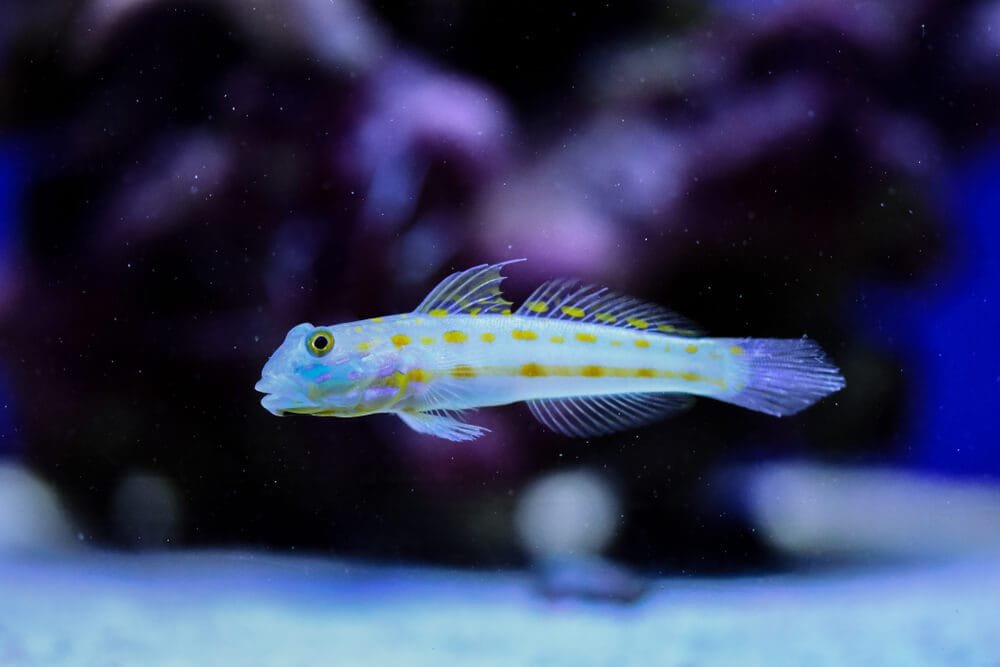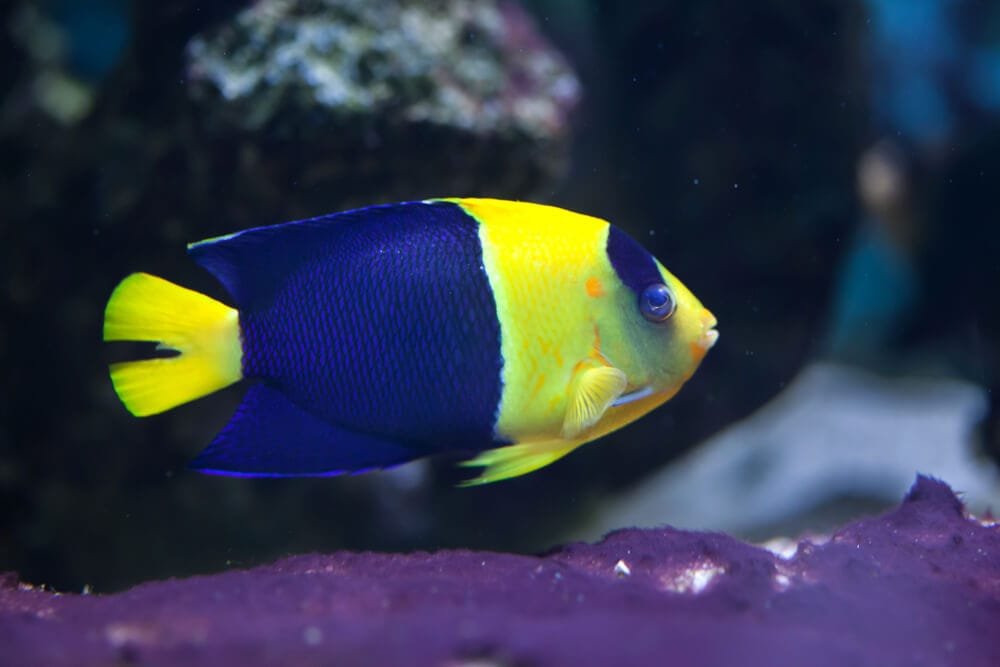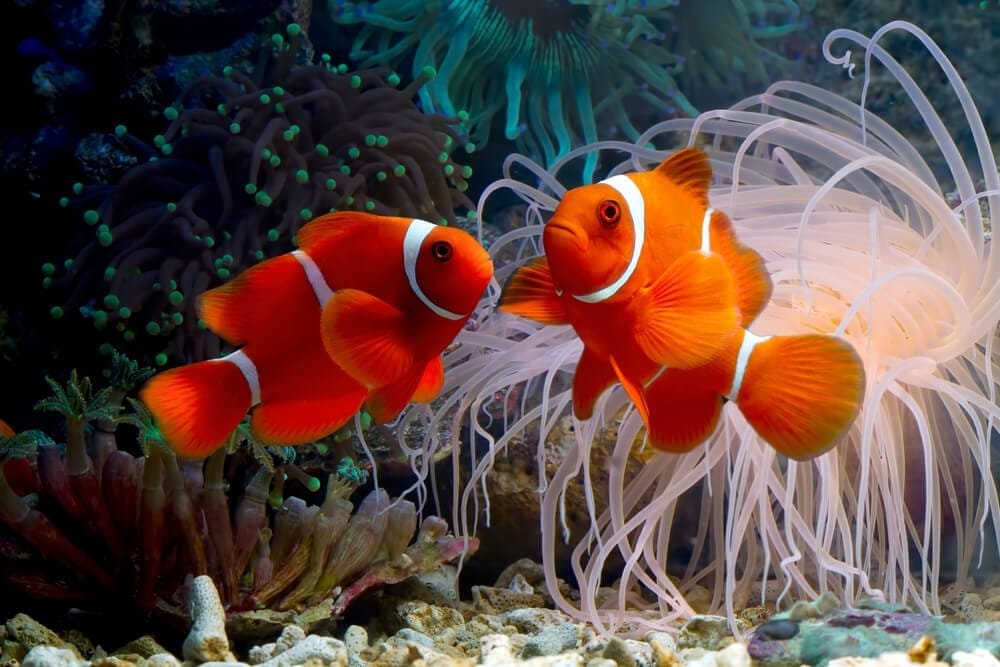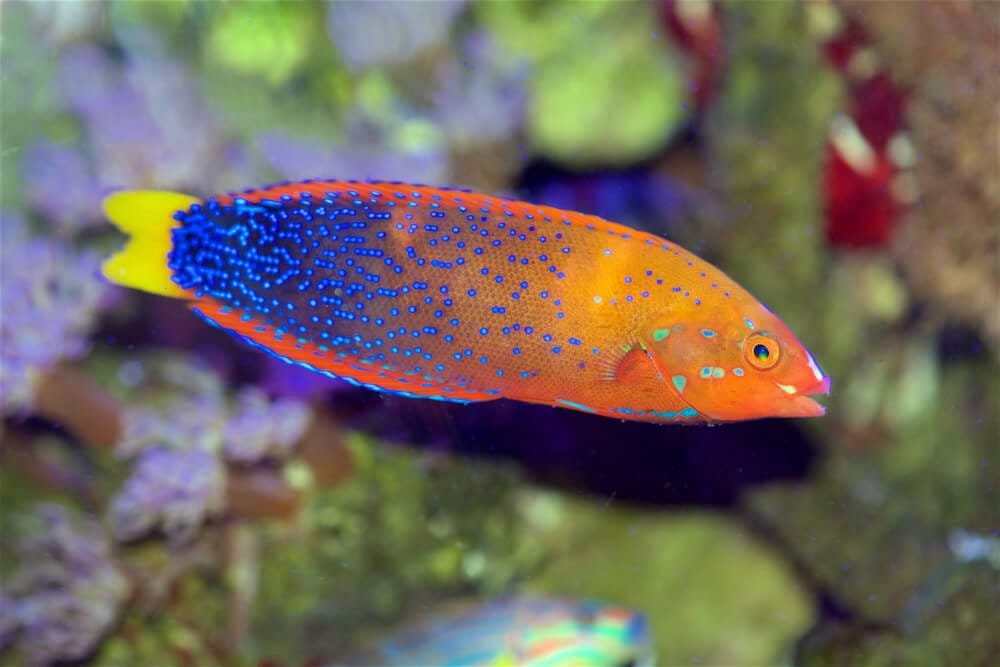Do you ever wonder what lies beneath the shimmering waters of the vast ocean? Let me introduce you to the captivating creature known as the Diamond Goby. With its striking diamond-like markings and graceful movements, this fish is a true marvel to behold. Whether it’s gliding through the sandy seabed or carefully excavating its burrow, the Diamond Goby never fails to command attention. Join me in exploring the fascinating world of this remarkable marine wonder.
Appearance
Body shape and color
The Diamond Goby, also known as the Orange Spotted Goby or the Sleeper Goby, is a fascinating fish with a unique appearance. It has a long, slender body with a pointed head and a distinct diamond-shaped pattern on its sides. The body color of this goby is usually pale yellow or sandy brown, which helps it camouflage in its sandy environment. The diamond pattern, made up of dark spots or stripes, gives it its name and adds to its charm.
Size and growth
These gobies are fairly small in size, reaching an average length of about 3 to 4 inches when fully grown. However, they have the ability to expand their bodies by gulping in water, which gives them a larger appearance. This expansion allows them to create a safer environment by reinforcing their burrows and preventing potential predators from getting inside. It’s important to keep in mind their potential growth when selecting an appropriate tank size for these gobies.
Habitat and Distribution
Natural habitat
Diamond Gobies are native to the Indo-Pacific region, where they inhabit sandy or muddy bottoms of coastal areas, lagoons, and reefs. They rely on their surroundings to provide them with shelter and protection, often burrowing into the substrate to create their homes. The sandy environment benefits them as it makes it easier for them to search for food and build their burrows.
Geographical distribution
These gobies have a wide distribution in the wild, ranging from the east coast of Africa to the central Pacific Ocean. They can be found in countries such as Indonesia, the Philippines, New Caledonia, and Australia. Their adaptable nature allows them to thrive in various environments, making them a common sight in tropical marine ecosystems.
Behavior
Burrowing behavior
One of the most interesting behaviors exhibited by Diamond Gobies is their impressive burrowing capabilities. They are highly skilled at excavating tunnels in the substrate, which serve as their shelter and defense mechanism. By burrowing, they create a safe haven from potential predators and establish their territory.
Feeding behavior
Diamond Gobies are opportunistic feeders, primarily feeding on small invertebrates, algae, and detritus found in the substrate. Their elongated bodies and protractile mouths allow them to sift through the sand, searching for food. These gobies play a crucial role in maintaining the health of their environment by consuming excess organic matter and preventing it from polluting the water.
Reproduction
Breeding habits
Diamond Gobies are oviparous, which means they reproduce through the laying of eggs. Breeding usually occurs during the spring and summer months when water temperatures rise. The male goby constructs a burrow where the female deposits her eggs, which he then fertilizes. The male diligently guards and cares for the eggs until they hatch, ensuring their survival.
Parental care
The male Diamond Goby demonstrates exceptional parental care by tending to the eggs until they hatch. During this time, he fans the eggs with his pectoral fins to provide oxygen and keeps a watchful eye for any potential threats. Once the fry hatch, they become independent and venture out into the world, ready to face the challenges that await them.
Diet
Natural diet
In their natural habitat, Diamond Gobies primarily feed on small crustaceans, worms, and other invertebrates found within the substrate. They use their protractile mouths to capture their prey, sifting through the sand and extracting any edible organisms they come across. This natural diet provides them with the necessary nutrients for their well-being.
Captive diet
When kept in captivity, it is important to provide Diamond Gobies with a varied and balanced diet. They can be fed a combination of live or frozen foods such as brine shrimp, mysis shrimp, bloodworms, and small pieces of fish or shrimp. It is recommended to provide a mix of protein-rich foods and vegetable matter to ensure their nutritional needs are met.
Tank Requirements
Tank size
When setting up a tank for Diamond Gobies, it is crucial to provide them with ample swimming space and a suitable substrate for burrowing. A tank size of at least 30 gallons is recommended to accommodate their active nature and allow for the construction of their burrows. Providing a larger tank can offer even more opportunities for natural behaviors and a more enriching environment.
Water conditions
Maintaining stable water conditions is vital for the health and well-being of Diamond Gobies. They thrive in tropical marine environments with a temperature range of 75 to 82 degrees Fahrenheit and a salinity between 1.020 to 1.025 specific gravity. Regular water testing and appropriate filtration are necessary to ensure the water quality remains optimal for these gobies.
Substrate and hiding spots
For their burrowing behavior, it is crucial to provide Diamond Gobies with a suitable substrate. A fine, sandy substrate is ideal, as it allows them to dig and construct their burrows effectively. Additionally, providing a variety of hiding spots such as live rock structures and PVC pipe sections can offer them additional shelter and territories to explore.
Compatibility
Suitable tankmates
Diamond Gobies are generally peaceful and can be kept with a variety of other marine species. However, it is important to consider their compatibility with tankmates. They can coexist with other small, peaceful fish such as clownfish, gobies, and certain reef-safe invertebrates like cleaner shrimp and snails. Care should be taken to avoid aggressive or territorial species that may pose a risk to the goby.
Aggression and territoriality
While they are generally peaceful, it is worth noting that Diamond Gobies can exhibit territorial behavior, especially when it comes to their burrows. They may become aggressive towards other gobies or fish that encroach on their territory. Providing ample space and separate areas for each goby can help alleviate potential conflicts and maintain a harmonious tank environment.
Health and Disease
Common diseases
Like all marine fish, Diamond Gobies may be susceptible to common diseases such as ich (white spot disease), velvet, and bacterial infections. It is essential to observe their behavior and appearance closely for any signs of disease, including abnormal swimming, loss of appetite, or visible physical changes.
Preventive measures
To prevent disease in Diamond Gobies, it is essential to maintain excellent water quality and provide a balanced diet. Regular water changes, proper filtration, and maintaining stable parameters will help keep these gobies healthy. Quarantining any new additions to the tank can also reduce the risk of introducing diseases to the existing inhabitants.
Captive Care
Acclimation
When introducing Diamond Gobies to a new tank, it is important to acclimate them slowly to prevent stress and potential health issues. Proper acclimation involves slowly adjusting the water parameters (temperature, salinity) over a period of time and allowing the goby to gradually adapt to its new environment. This can be done by floating the bag containing the fish in the tank and periodically adding small amounts of tank water to the bag.
Feeding regimen
Diamond Gobies should be fed small, frequent meals throughout the day to replicate their natural feeding behavior. Offering a variety of high-quality foods, such as live or frozen options, will help ensure they receive a balanced diet. It is important not to overfeed them, as excess food can degrade water quality.
Water quality management
Maintaining optimal water quality is crucial for the overall health and well-being of Diamond Gobies. Regular water testing, proper filtration, and regular water changes are necessary to keep ammonia, nitrate, and nitrite levels in check. It is also important to monitor and maintain stable temperature and salinity levels, as any drastic changes can be stressful for these sensitive fish.
Conclusion
The Diamond Goby, with its unique appearance, burrowing behavior, and peaceful nature, is a captivating addition to any marine aquarium. Providing them with a suitable habitat, appropriate tankmates, and a balanced diet will ensure their well-being and allow them to exhibit their natural behaviors. With proper care and attention, these fascinating gobies can thrive, adding a touch of beauty and charm to your underwater world.







